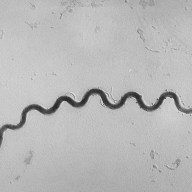OAKVILLE, Ont. – Canada’s gastroenterologists have new guidelines on safety and quality indicators to help with the more than 1.6 million procedures performed each year, their association announced Monday.
Although the Canadian Association of Gastroenterology has guidelines around credentials and training, there was a void in other areas.
“If one looks at the sort of totality of endoscopy service delivery, particularly from a patient point of view — which is access to services, rapid access, high quality services, feedback, and an ability to respond to how they perceive endoscopy service delivery — then there really was nothing in place,” said Dr. David Armstrong, chair of the endoscopy committee and the consensus guideline committee.
Endoscopy is used to detect or screen for a number of diseases and involves examining the colon or digestive tract using a long, thin tube with a light and camera attached.
Last October, about 6,800 Ottawa residents were sent letters from public health officials after it was found that a non-hospital clinic wasn’t following some procedures involving cleaning and infection prevention. The letters indicated the patients might have been exposed to hepatitis B, hepatitis C or HIV.
Armstrong said he likes to think the presence of these guidelines would have made a difference in the Ottawa situation.
“That’s really because one of the challenges for endoscopy — and it’s in and out of hospitals — has been that if there isn’t a framework to say how things should be monitored and how they should be delivered, it’s difficult to know how much or how closely to monitor things, and what actually are the standards,” Armstrong said in an interview from Hamilton, where he’s an associate professor of medicine at McMaster University.
“So I think guidelines that say what should be monitored and what processes have to be in place really from a patient point of view and knowledge that there are tools available to monitor the way that services are delivered and to use as a basis for quality improvement programs would have made a big difference.”
Armstrong indicated that it used to be felt that washing the scope and then doing a manual cleaning was sufficient.
“And the trouble is there are times when that isn’t sufficient. It’s also important to ensure that all of the endoscopy manufacturers’ instructions and the automatic cleaning equipment instructions are followed, that there’s regular checks of the equipment and the water supply and the filtration and everything else.”
It’s something of an undertaking, he noted.
“And so to know that those have to be checked regularly and incorporated into all the other quality processes, I think is going to be key as we go forward — particularly as volumes increase.”
The new Consensus Guidelines on Safety and Quality Indicators in Endoscopy were developed by a group of 35 Canadian, European and U.S.-based participants, the association said. They reviewed more than two decades’ worth of research to develop their recommendations.
Focus groups and patients in Calgary, Hamilton and Montreal were also involved, and questioned about their concerns around the procedures, Armstrong said.
















